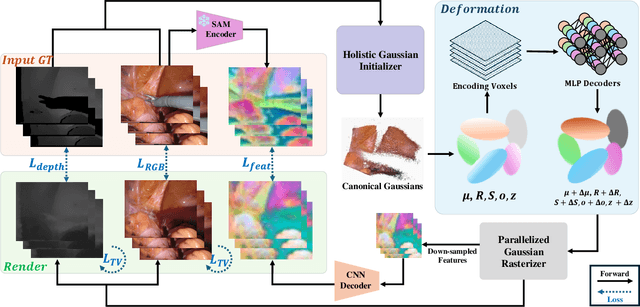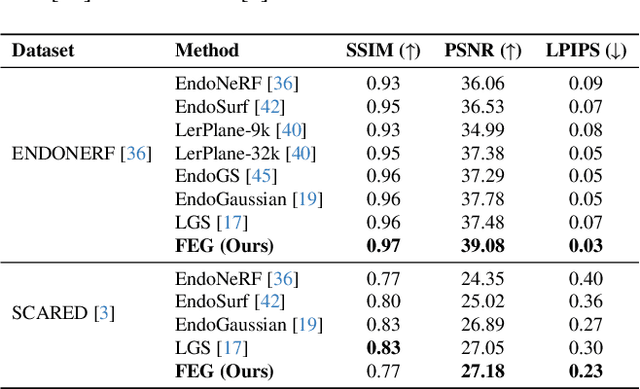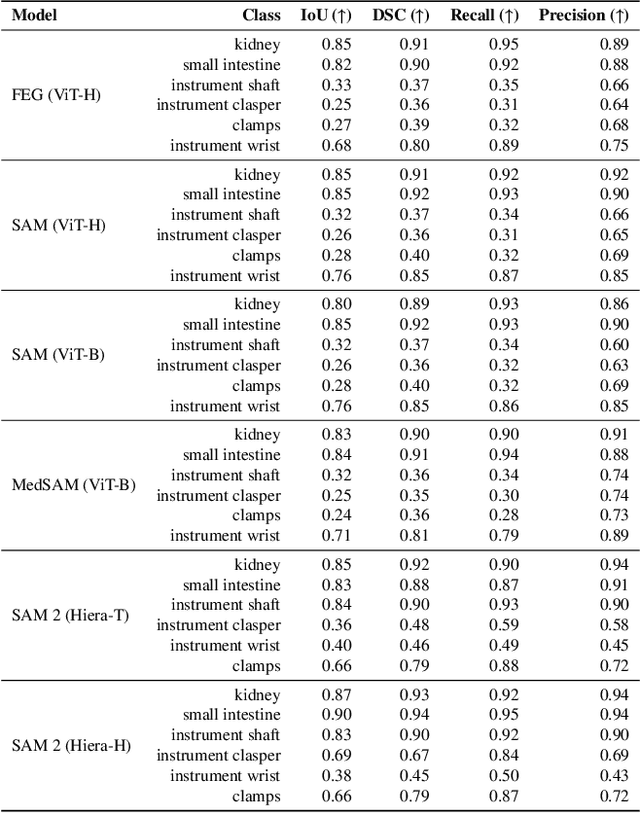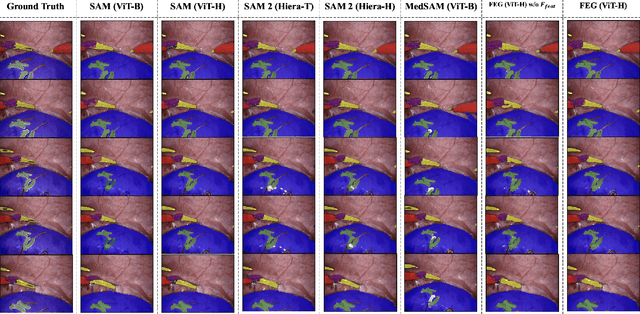Junhao Wang
AgenTracer: Who Is Inducing Failure in the LLM Agentic Systems?
Sep 04, 2025Abstract:Large Language Model (LLM)-based agentic systems, often comprising multiple models, complex tool invocations, and orchestration protocols, substantially outperform monolithic agents. Yet this very sophistication amplifies their fragility, making them more prone to system failure. Pinpointing the specific agent or step responsible for an error within long execution traces defines the task of agentic system failure attribution. Current state-of-the-art reasoning LLMs, however, remain strikingly inadequate for this challenge, with accuracy generally below 10%. To address this gap, we propose AgenTracer, the first automated framework for annotating failed multi-agent trajectories via counterfactual replay and programmed fault injection, producing the curated dataset TracerTraj. Leveraging this resource, we develop AgenTracer-8B, a lightweight failure tracer trained with multi-granular reinforcement learning, capable of efficiently diagnosing errors in verbose multi-agent interactions. On the Who&When benchmark, AgenTracer-8B outperforms giant proprietary LLMs like Gemini-2.5-Pro and Claude-4-Sonnet by up to 18.18%, setting a new standard in LLM agentic failure attribution. More importantly, AgenTracer-8B delivers actionable feedback to off-the-shelf multi-agent systems like MetaGPT and MaAS with 4.8-14.2% performance gains, empowering self-correcting and self-evolving agentic AI.
SWE-bench Goes Live!
May 29, 2025Abstract:The issue-resolving task, where a model generates patches to fix real-world bugs, has emerged as a critical benchmark for evaluating the capabilities of large language models (LLMs). While SWE-bench and its variants have become standard in this domain, they suffer from key limitations: they have not been updated since their initial releases, cover a narrow set of repositories, and depend heavily on manual effort for instance construction and environment setup. These factors hinder scalability and introduce risks of overfitting and data contamination. In this work, we present \textbf{SWE-bench-Live}, a \textit{live-updatable} benchmark designed to overcome these challenges. Our initial release consists of 1,319 tasks derived from real GitHub issues created since 2024, spanning 93 repositories. Each task is accompanied by a dedicated Docker image to ensure reproducible execution. Central to our benchmark is \method, an automated curation pipeline that streamlines the entire process from instance creation to environment setup, removing manual bottlenecks and enabling scalability and continuous updates. We evaluate a range of state-of-the-art agent frameworks and LLMs on SWE-bench-Live, revealing a substantial performance gap compared to static benchmarks like SWE-bench, even under controlled evaluation conditions. To better understand this discrepancy, we perform detailed analyses across repository origin, issue recency, and task difficulty. By providing a fresh, diverse, and executable benchmark grounded in live repository activity, SWE-bench-Live facilitates rigorous, contamination-resistant evaluation of LLMs and agents in dynamic, real-world software development settings.
Geometric Parameter Estimations of Perovskite Solar Cells Based on Optical Simulations
Mar 13, 2025



Abstract:This paper presents a non-invasive approach to estimate the layer thicknesses of perovskite solar cells. The thicknesses are predicted by a convolutional neural network that leverages the external quantum efficiency of a perovskite solar cell. The network is trained in thickness ranges where the optical properties are constant, and these ranges set the constraints for the network's application. Due to light sensitivity issues with opaque perovskites, the convolutional neural network showed better performance with transparent perovskites. To optimize the performance and reduce the root mean square error, we tried different sampling methods, image specifications, and Bayesian optimization for hyperparameter tuning. While sampling methods showed marginal improvement, implementing Bayesian optimization demonstrated high accuracy. Other minor optimization attempts include experimenting with input specifications and pre-processing approaches. The results confirm the feasibility, efficiency, and effectiveness of a convolution neural network for predicting perovskite solar cells' layer thicknesses based on controlled experiments.
Feature-EndoGaussian: Feature Distilled Gaussian Splatting in Surgical Deformable Scene Reconstruction
Mar 08, 2025



Abstract:Minimally invasive surgery (MIS) has transformed clinical practice by reducing recovery times, minimizing complications, and enhancing precision. Nonetheless, MIS inherently relies on indirect visualization and precise instrument control, posing unique challenges. Recent advances in artificial intelligence have enabled real-time surgical scene understanding through techniques such as image classification, object detection, and segmentation, with scene reconstruction emerging as a key element for enhanced intraoperative guidance. Although neural radiance fields (NeRFs) have been explored for this purpose, their substantial data requirements and slow rendering inhibit real-time performance. In contrast, 3D Gaussian Splatting (3DGS) offers a more efficient alternative, achieving state-of-the-art performance in dynamic surgical scene reconstruction. In this work, we introduce Feature-EndoGaussian (FEG), an extension of 3DGS that integrates 2D segmentation cues into 3D rendering to enable real-time semantic and scene reconstruction. By leveraging pretrained segmentation foundation models, FEG incorporates semantic feature distillation within the Gaussian deformation framework, thereby enhancing both reconstruction fidelity and segmentation accuracy. On the EndoNeRF dataset, FEG achieves superior performance (SSIM of 0.97, PSNR of 39.08, and LPIPS of 0.03) compared to leading methods. Additionally, on the EndoVis18 dataset, FEG demonstrates competitive class-wise segmentation metrics while balancing model size and real-time performance.
From Principles to Applications: A Comprehensive Survey of Discrete Tokenizers in Generation, Comprehension, Recommendation, and Information Retrieval
Feb 18, 2025Abstract:Discrete tokenizers have emerged as indispensable components in modern machine learning systems, particularly within the context of autoregressive modeling and large language models (LLMs). These tokenizers serve as the critical interface that transforms raw, unstructured data from diverse modalities into discrete tokens, enabling LLMs to operate effectively across a wide range of tasks. Despite their central role in generation, comprehension, and recommendation systems, a comprehensive survey dedicated to discrete tokenizers remains conspicuously absent in the literature. This paper addresses this gap by providing a systematic review of the design principles, applications, and challenges of discrete tokenizers. We begin by dissecting the sub-modules of tokenizers and systematically demonstrate their internal mechanisms to provide a comprehensive understanding of their functionality and design. Building on this foundation, we synthesize state-of-the-art methods, categorizing them into multimodal generation and comprehension tasks, and semantic tokens for personalized recommendations. Furthermore, we critically analyze the limitations of existing tokenizers and outline promising directions for future research. By presenting a unified framework for understanding discrete tokenizers, this survey aims to guide researchers and practitioners in addressing open challenges and advancing the field, ultimately contributing to the development of more robust and versatile AI systems.
Skeleton-Guided-Translation: A Benchmarking Framework for Code Repository Translation with Fine-Grained Quality Evaluation
Jan 27, 2025



Abstract:The advancement of large language models has intensified the need to modernize enterprise applications and migrate legacy systems to secure, versatile languages. However, existing code translation benchmarks primarily focus on individual functions, overlooking the complexities involved in translating entire repositories, such as maintaining inter-module coherence and managing dependencies. While some recent repository-level translation benchmarks attempt to address these challenges, they still face limitations, including poor maintainability and overly coarse evaluation granularity, which make them less developer-friendly. We introduce Skeleton-Guided-Translation, a framework for repository-level Java to C# code translation with fine-grained quality evaluation. It uses a two-step process: first translating the repository's structural "skeletons", then translating the full repository guided by these skeletons. Building on this, we present TRANSREPO-BENCH, a benchmark of high quality open-source Java repositories and their corresponding C# skeletons, including matching unit tests and build configurations. Our unit tests are fixed and can be applied across multiple or incremental translations without manual adjustments, enhancing automation and scalability in evaluations. Additionally, we develop fine-grained evaluation metrics that assess translation quality at the individual test case level, addressing traditional binary metrics' inability to distinguish when build failures cause all tests to fail. Evaluations using TRANSREPO-BENCH highlight key challenges and advance more accurate repository level code translation.
DI-BENCH: Benchmarking Large Language Models on Dependency Inference with Testable Repositories at Scale
Jan 23, 2025Abstract:Large Language Models have advanced automated software development, however, it remains a challenge to correctly infer dependencies, namely, identifying the internal components and external packages required for a repository to successfully run. Existing studies highlight that dependency-related issues cause over 40\% of observed runtime errors on the generated repository. To address this, we introduce DI-BENCH, a large-scale benchmark and evaluation framework specifically designed to assess LLMs' capability on dependency inference. The benchmark features 581 repositories with testing environments across Python, C#, Rust, and JavaScript. Extensive experiments with textual and execution-based metrics reveal that the current best-performing model achieves only a 42.9% execution pass rate, indicating significant room for improvement. DI-BENCH establishes a new viewpoint for evaluating LLM performance on repositories, paving the way for more robust end-to-end software synthesis.
SweetTokenizer: Semantic-Aware Spatial-Temporal Tokenizer for Compact Visual Discretization
Dec 17, 2024



Abstract:This paper presents the \textbf{S}emantic-a\textbf{W}ar\textbf{E} spatial-t\textbf{E}mporal \textbf{T}okenizer (SweetTokenizer), a compact yet effective discretization approach for vision data. Our goal is to boost tokenizers' compression ratio while maintaining reconstruction fidelity in the VQ-VAE paradigm. Firstly, to obtain compact latent representations, we decouple images or videos into spatial-temporal dimensions, translating visual information into learnable querying spatial and temporal tokens through a \textbf{C}ross-attention \textbf{Q}uery \textbf{A}uto\textbf{E}ncoder (CQAE). Secondly, to complement visual information during compression, we quantize these tokens via a specialized codebook derived from off-the-shelf LLM embeddings to leverage the rich semantics from language modality. Finally, to enhance training stability and convergence, we also introduce a curriculum learning strategy, which proves critical for effective discrete visual representation learning. SweetTokenizer achieves comparable video reconstruction fidelity with only \textbf{25\%} of the tokens used in previous state-of-the-art video tokenizers, and boost video generation results by \textbf{32.9\%} w.r.t gFVD. When using the same token number, we significantly improves video and image reconstruction results by \textbf{57.1\%} w.r.t rFVD on UCF-101 and \textbf{37.2\%} w.r.t rFID on ImageNet-1K. Additionally, the compressed tokens are imbued with semantic information, enabling few-shot recognition capabilities powered by LLMs in downstream applications.
MCVO: A Generic Visual Odometry for Arbitrarily Arranged Multi-Cameras
Dec 04, 2024



Abstract:Making multi-camera visual SLAM systems easier to set up and more robust to the environment is always one of the focuses of vision robots. Existing monocular and binocular vision SLAM systems have narrow FoV and are fragile in textureless environments with degenerated accuracy and limited robustness. Thus multi-camera SLAM systems are gaining attention because they can provide redundancy for texture degeneration with wide FoV. However, current multi-camera SLAM systems face massive data processing pressure and elaborately designed camera configurations, leading to estimation failures for arbitrarily arranged multi-camera systems. To address these problems, we propose a generic visual odometry for arbitrarily arranged multi-cameras, which can achieve metric-scale state estimation with high flexibility in the cameras' arrangement. Specifically, we first design a learning-based feature extraction and tracking framework to shift the pressure of CPU processing of multiple video streams. Then we use the rigid constraints between cameras to estimate the metric scale poses for robust SLAM system initialization. Finally, we fuse the features of the multi-cameras in the SLAM back-end to achieve robust pose estimation and online scale optimization. Additionally, multi-camera features help improve the loop detection for pose graph optimization. Experiments on KITTI-360 and MultiCamData datasets validate the robustness of our method over arbitrarily placed cameras. Compared with other stereo and multi-camera visual SLAM systems, our method obtains higher pose estimation accuracy with better generalization ability. Our codes and online demos are available at \url{https://github.com/JunhaoWang615/MCVO}
Evaluating Language Models for Efficient Code Generation
Aug 12, 2024Abstract:We introduce Differential Performance Evaluation (DPE), a framework designed to reliably evaluate Large Language Models (LLMs) for efficient code generation. Traditional coding benchmarks often fail to provide reliable insights into code efficiency, due to their reliance on simplistic test inputs and the absence of effective compound metrics. DPE addresses these issues by focusing on efficiency-demanding programming tasks and establishing an insightful compound metric for performance evaluation. DPE operates in two phases: To curate efficiency datasets, it selects efficiency-demanding tasks from existing coding benchmarks and generates computationally expensive inputs to stress the efficiency of LLM solutions. To assess the code efficiency, DPE profiles the new solution and compares it globally against a set of reference solutions that exhibit distinct efficiency levels, where the matched level defines its efficiency score. As a proof of concept, we use DPE to create EvalPerf, a benchmark with 121 performance-challenging coding tasks. Our comprehensive evaluation draws interesting findings on the efficiency impact of model sizes, instruction tuning, and prompting. For example, while the scaling law fails to account for code efficiency, general instruction tuning benefits both code correctness and efficiency. We also evaluate the evaluation by examining the effectiveness of DPE, showing that EvalPerf is reliable and convenient to use even across platforms.
 Add to Chrome
Add to Chrome Add to Firefox
Add to Firefox Add to Edge
Add to Edge